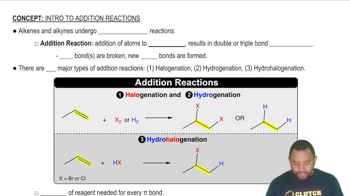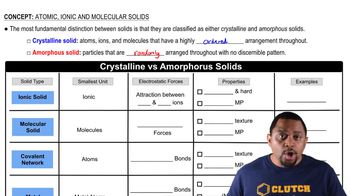Textbook Question
Write a balanced chemical equation for the formation of a polymer via a condensation reaction from the monomers succinic acid 1HOOCCH2CH2COOH2 and ethylenediamine 1H2NCH2CH2NH22.
 Verified step by step guidance
Verified step by step guidance


Write a balanced chemical equation for the formation of a polymer via a condensation reaction from the monomers succinic acid 1HOOCCH2CH2COOH2 and ethylenediamine 1H2NCH2CH2NH22.
Write the chemical equation that represents the formation of (b) polyacrylonitrile from acrylonitrile (polyacrylonitrile is used in home furnishings, craft yarns, clothing, and many other items).
What molecular structural features cause high-density polyethylene to be denser than low-density polyethylene?